Australia Bike Tour Day 40: Uluru
Uluru, (the big rock you’ve probably seen on a postcard from Australia) – literally the heart of the Australian Outback (if not for this rock nobody would come out here) – has long occupied a spot on my “things in the world I have to see” list (yes, I have a list).
Sure, it might only be a large sandstone rock formation, but at 5.8 mi / 9.4 km around, this 2,831 ft / 863 m tall symbol of Australia makes the long and lonely trip into the Outback a worthy endeavor.
In fact, if it weren’t for Uluru, I don’t know that I would be doing this bicycle trip through the desert in the first place (I may have opted to cross the Nullarbor to Perth).

It’s a good thing I brought my bike here with me yesterday, because the rock is a whole 12 miles (20 km) south of Yulara (the small community where I’m currently held up).
Walkable? Yeah, sure. But I’d rather spend my day checking out this natural wonder instead of walking to/from it (although I bet hitchhiking here would be quite easy).
The best part? I can leave all my gear in Yulara and, for once, see what it feels like to ride a bike that doesn’t weigh half of what I do (aka a lot).
The verdict? It feels incredible.
I’m so used to having heavy panniers on the front and back of the bike that my steering muscle memory has become horribly miscalibrated. It’s like walking with no pack after a heavy water carry – I am superhuman.

Admission to Uluṟu-Kata Tjuṯa National Park is A$25 per adult for a three-day pass – sadly, I do not get a cyclist discount.
Entering the park I meet another cyclist, also touring around Australia. This man has just come to Uluru across Aboriginal lands to the south – via unsealed roads (aka dirt). He’s obviously a lot cooler than I am. If not for the rock, this would have most certainly been the highlight of my day (it’s rare that I meet fellow cyclists).
I continue down the road to the rock trying to resist the temptation to stop every thirty seconds and take pictures.
Getting closer, the rock ceases to be the large bread-loaf-like formation seen from afar and morphs into a wall of rolling orange rock shooting vertically from the earth. It’s now a lumpy, clumsy wave of sandstone, full of holes, gashes, and crevasses. It’s not the smooth half-egg that I imagined. It’s flawed. Just like me. Sniff.

Halfway around, I pause my circumnavigation to take some photos.
However, I am quickly approached by a car full of people – very angry that I am engaged in photographic activity. As much as I enjoy being yelled at and harassed by strangers, I’m not in the mood for it today. I tell them to get lost as politely as I know how and I return to the task at hand.
Now, the Aṉangu are the traditional owners of Uluru, and because of traditional Aboriginal beliefs photography is restricted in certain areas (marked by obvious signage). Now, I was not in one of these areas, but even if I was, I do not agree with this prohibition.
I would understand the “no photography” rule if I were photographing something constructed by someone of a group of people. If someone builds something they consider sacred, unique, or otherwise special, and they did not want it to be photographed, I would not put up a fuss (I’m looking at you, Sistine Chapel).
But Uluru is (literally) part of the earth. It has and will always be here (relatively speaking). The idea that it belongs to someone, or that you can justifiably enforce a prohibition on photography is a bit absurd.
The traditional “owners” of Uluru also discourage the climbing of the rock, but there is no prohibition in place to stop visitors from doing so (although the climb is sometimes closed due to weather).
I understand and respect the not wanting people to climb (I did not), but I can’t get on board with the no photos thing.
Okay, rant over.

After completing my circle of Uluru, I head back towards the park entrance.
On the way I pass the Uluru Sunset Viewing Area – it’s packed. Do I care? No! I’m on a bike and can go anywhere!
I weave my way in through the cars until I find a guy with a very expensive tripod and camera; I assume he has done his research and chosen this spot for a reason. His spot is now my spot too.
As I melt into the crowd, everyone snaps pictures of the rock as it’s color slowly runs the gamut of the visible spectrum, I manage to make friends with Mr. Fancy Tripod and a German couple he’s been talking to. Why is this relevant? Because I rode down here without my light, and a lift back to Yulara would be incredibly helpful in my continuing pursuit of not being struck by a vehicle.
Do I get offered a ride? Yes, yes I do.
Watching the sun set on Uluru brings a nice closure to the first half of my bicycle adventure; 1,278 mi / 2,057 km down, 1,056 mi / 1,700 km to go.

- Start: Yulara, Northern Territory
- End: Yulara, Northern Territory
- Day’s Distance: 21.8 mi / 35.08 km
- Total Distance: 1,385.36 mi / 2,229.52 km
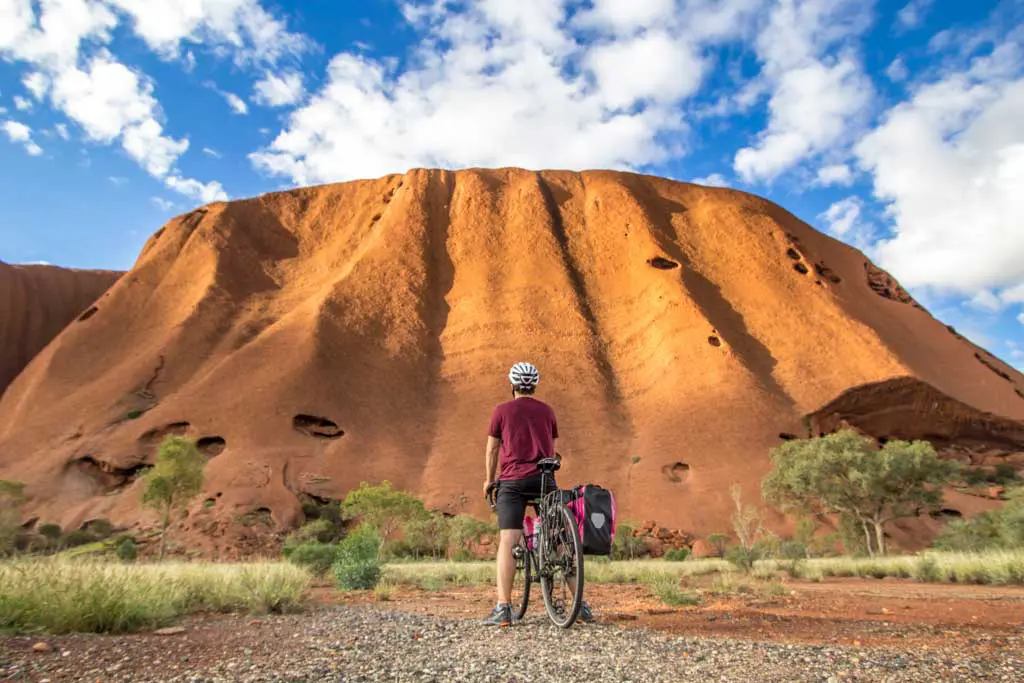
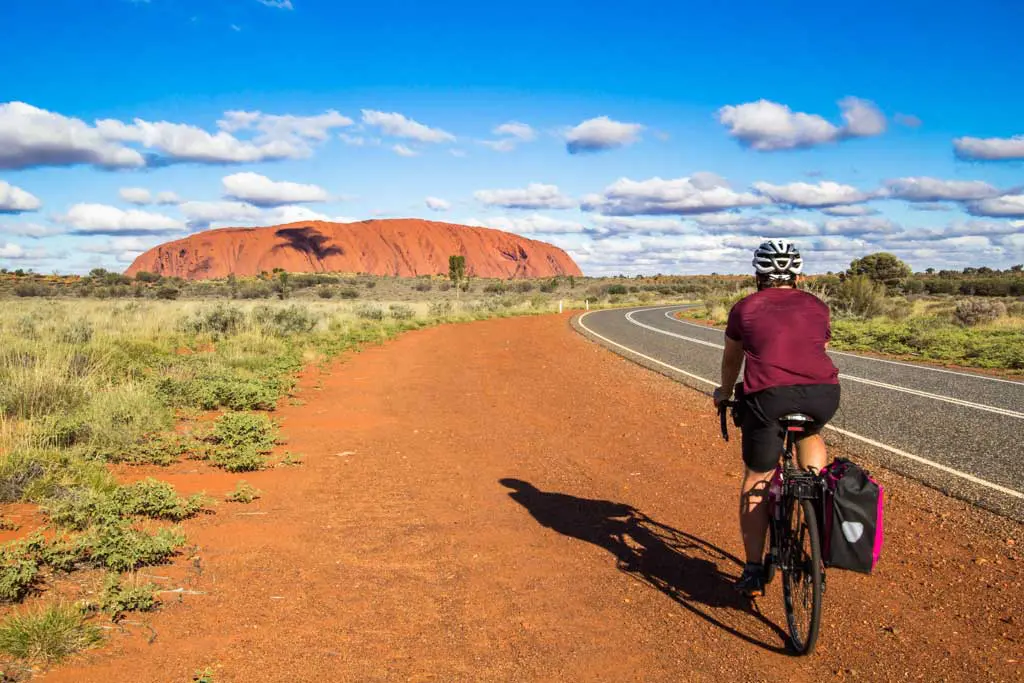
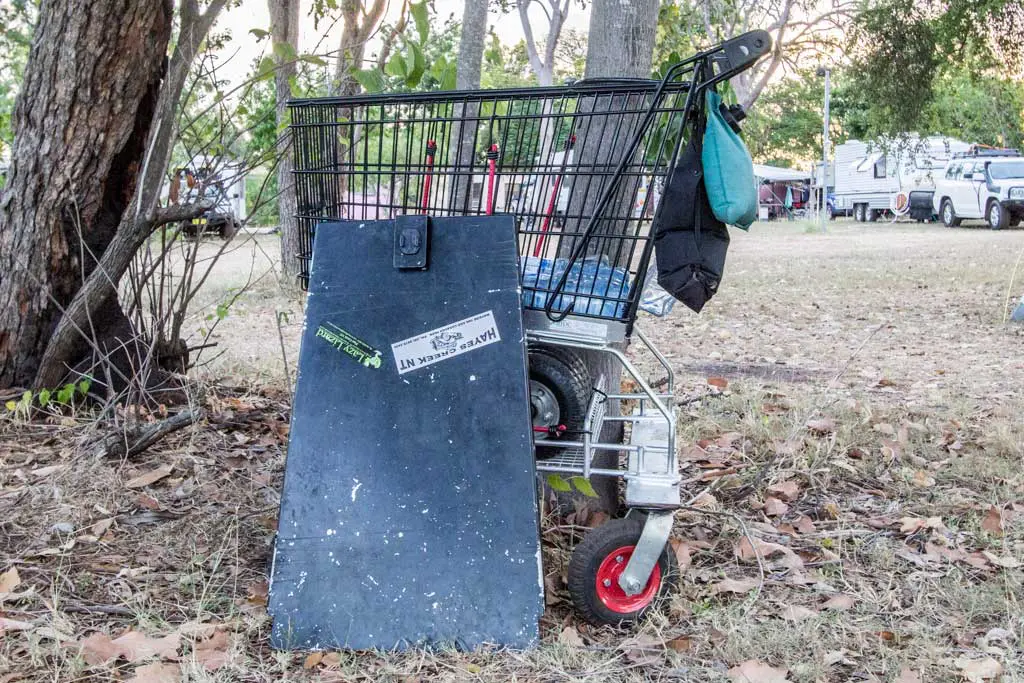
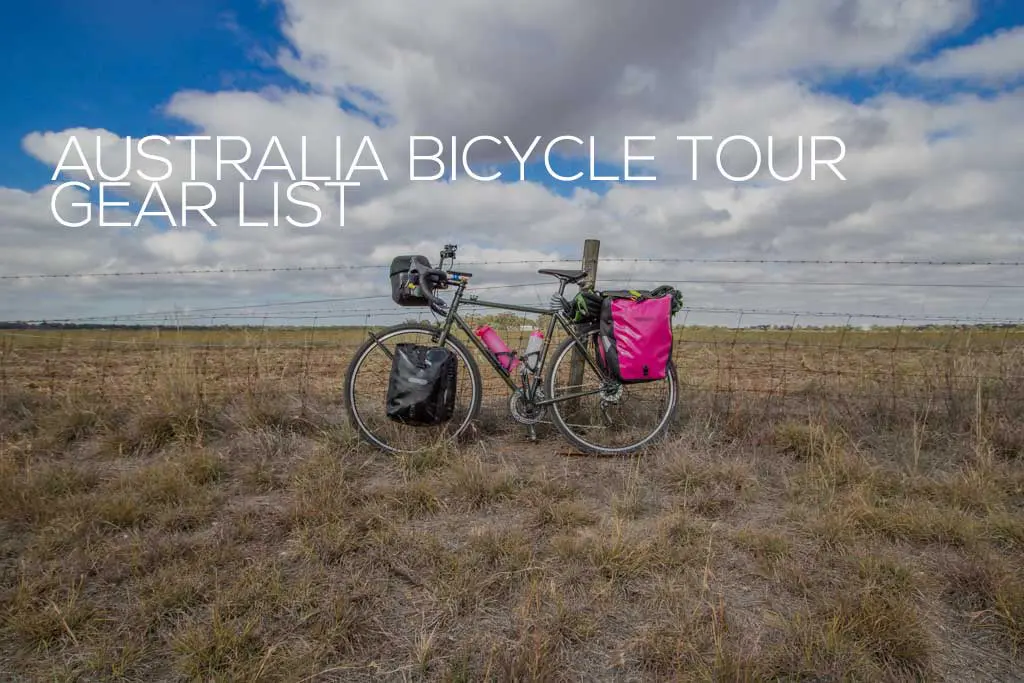
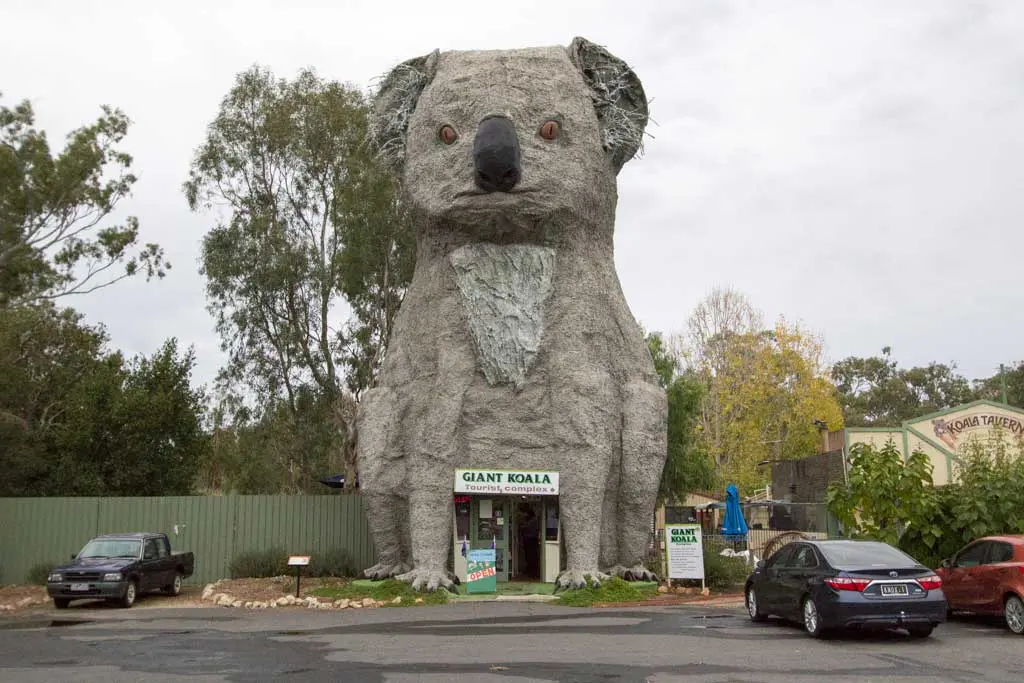


Hey – Just wondering why you make the distinction of “no photography” rule being okay for something manmade and sacred (like the Sistine Chapel) versus something that natural and sacred (like Uluru)?
Because the Earth was here before any of us.